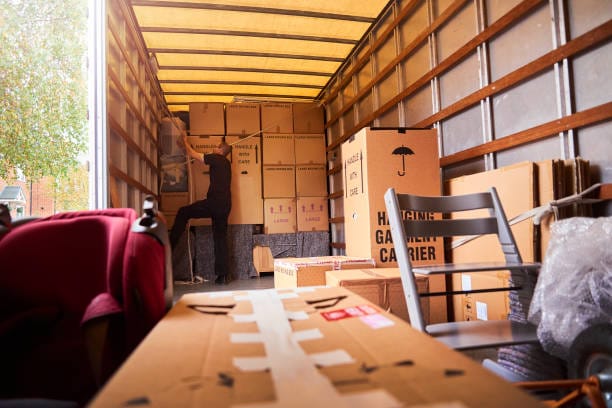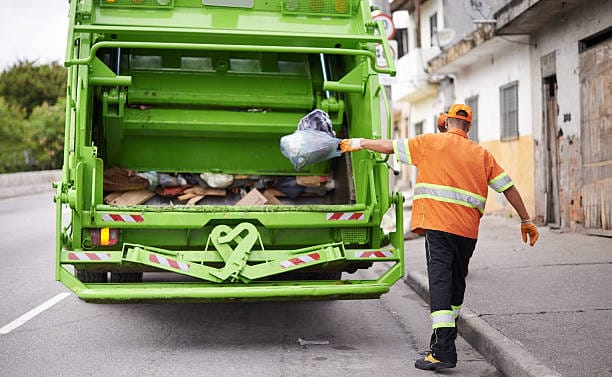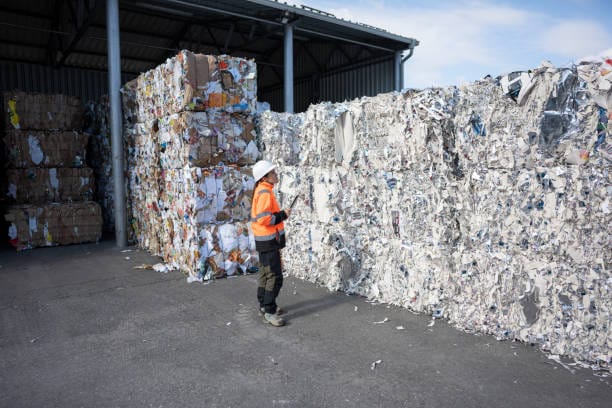When it comes to business relocation, moving IT equipment is one of the most critical and delicate tasks. Unlike standard office furniture or general office supplies, IT equipment needs careful handling, security, and efficient setup. IT relocation requires expert knowledge of how to disassemble, transport, and reassemble complex systems while ensuring data integrity and minimizing downtime. Professional commercial removals services specialize in IT relocations, offering businesses the peace of mind that their equipment will be handled with the utmost care.
Why IT Relocation is Different from Regular Office Moves
IT relocation differs from regular office moves due to the specialized requirements of handling technology and critical infrastructure. Unlike standard office equipment, IT systems like servers, network devices, and data storage units require careful disconnection, packing, and reinstallation to avoid downtime or data loss. Proper planning is essential to ensure minimal disruption to business operations, including backing up data, mapping out network configurations, and coordinating with IT specialists. Additionally, IT moves often involve sensitive data and compliance considerations, making security a top priority. These complexities make IT relocation a highly technical process that requires expertise beyond a regular office move.
Specialized Requirements for Moving IT Equipment
Moving IT equipment isn’t as simple as throwing computers and cables into a box and transporting them. Several factors set IT relocation apart from standard office removals:
- Fragility: IT equipment, such as servers, computers, and networking hardware, is delicate and can be easily damaged.
- Complexity: Disassembling, packaging, and reassembling systems requires skilled technicians who understand the intricacies of each piece of equipment.
- Data Sensitivity: Handling sensitive data and ensuring that information is not lost or compromised during the move is a top priority.
Handling Sensitive Data and Equipment
When relocating IT infrastructure, businesses must ensure that sensitive data is protected during transportation. A professional IT relocation service will take the necessary steps to secure your data, including:
- Encryption of data during transit
- Data wiping services for old or outdated devices
- Secure transport with tamper-proof seals on boxes and containers
Key Benefits of Professional IT Relocation
Professional IT relocation services offer key benefits, ensuring a seamless and secure transition of your technology infrastructure. Experts handle the disconnection, transportation, and reinstallation of critical IT systems, minimizing downtime and reducing the risk of damage or data loss. They provide detailed planning and project management, ensuring every step of the move aligns with your business needs. With professional handling, sensitive data is protected, and compliance with industry regulations is maintained. Additionally, they offer support for testing and troubleshooting after the move, ensuring your systems are up and running quickly, allowing your business to resume operations without disruption.
Expertise in Managing Technology Moves
Hiring a professional IT relocation company ensures that your equipment is handled by experts with experience in moving technology. These movers are trained to safely pack and unpack high-tech systems, reducing the risk of damage and ensuring proper setup at the new location.
Minimizing Downtime and Ensuring Business Continuity
For businesses, minimizing downtime during a move is essential. Professional IT relocation services specialize in ensuring that the move is executed quickly and efficiently, allowing employees to get back to work as soon as possible. Using experienced movers can help reduce downtime by:
- Pre-move planning: Ensuring everything is ready for a smooth transition.
- Post-move testing: Verifying that all systems are working correctly after the move.
Security and Confidentiality During the Move
A reliable IT relocation company will offer secure handling of sensitive data and equipment throughout the move. They use the best practices to ensure that your systems are safe and confidential, mitigating the risks of data breaches or loss.
How to Prepare for IT Relocation
Preparing for IT relocation requires careful planning to ensure a smooth transition. Start by conducting an inventory of all your IT equipment, including servers, computers, networking devices, and peripherals. Create a detailed plan that outlines the steps of the move, including the timeline and responsibilities of your team and the relocation service provider. Back up all important data to prevent any loss during transport. Label and document the configuration of your IT systems, including network setups, to ensure proper reinstallation. Additionally, coordinate with IT specialists to disconnect and secure sensitive equipment, and make arrangements for testing the systems once they are set up in the new location. Proper preparation will minimize downtime and ensure that your business operations resume smoothly post-relocation.
Inventory of Equipment
Before the move, it’s essential to take an inventory of all the IT equipment that will be relocated. This helps ensure that nothing is overlooked and that everything is accounted for during the packing and unpacking process.
Backup of Important Data
To avoid the risk of losing data during the move, make sure to back up all important files and information before the relocation. A professional moving company may also offer data backup services as part of their package.
Notify Employees and Customers
Let your employees know about the move in advance, so they are prepared for any interruptions in service or changes to the workspace. Informing customers of any service disruptions will help manage expectations during the move.
Steps Involved in IT Relocation
IT relocation involves several critical steps to ensure a smooth and secure transition of your technology infrastructure. First, conduct an inventory and assessment of all IT equipment, including hardware, software, and network systems. Next, back up all data to prevent any loss during the move. Afterward, disconnect and carefully pack each piece of equipment, ensuring it is properly labeled and protected for transport. The relocation process also includes setting up the new space, installing and configuring IT systems, and ensuring the network infrastructure is operational. Testing is crucial to ensure everything is functioning correctly, and troubleshooting is handled promptly. Finally, ensure that security protocols and compliance standards are maintained throughout the process to protect sensitive data.
Initial Assessment and Planning
Before the actual relocation, a professional IT relocation company will conduct an initial assessment of your current setup. This includes evaluating the size and complexity of the move, identifying special handling needs, and developing a detailed plan for packing, transporting, and reassembling your equipment.
Packing and Labeling
Proper packing is crucial to avoid damage during transport. The movers will use specialized materials such as anti-static wraps, bubble wrap, and sturdy crates to secure each item. Labeling ensures that everything is easily identifiable during the unpacking process.
Transportation and Setup
After your equipment is packed, it will be carefully transported to the new location. Upon arrival, technicians will begin the setup, ensuring that all systems are correctly installed, connected, and functional.
Testing and Verification
Once the equipment is set up, a final test will be conducted to ensure that all IT systems are functioning properly. This includes checking network connections, servers, and any other technology critical to business operations.
Choosing the Right IT Relocation Company
Choosing the right IT relocation company is crucial to ensuring the safe and efficient transfer of your technology infrastructure. Look for a provider with proven experience in handling IT relocations, particularly for businesses similar to yours. They should offer comprehensive services, including equipment packing, disconnection, secure transport, and reinstallation, as well as data backup and recovery options. Ensure they have the necessary expertise to handle your specific IT needs, such as network setup and system testing. Check for strong customer references, certifications, and insurance coverage to protect your valuable equipment. Additionally, choose a company that understands the importance of minimizing downtime and can provide a clear timeline and project management support throughout the process.
What to Look for in a Commercial Removals Company
When selecting an IT relocation company, consider the following:
- Experience: Look for companies with a proven track record in handling IT relocations.
- Insurance: Ensure the company provides insurance for your equipment during the move.
- Specialized equipment: Choose a company that uses specialized equipment and packing materials for IT equipment.
Questions to Ask Before Hiring a Service
Before hiring a commercial removals company, ask questions such as:
- What is your experience with IT relocations?
- Do you provide data security services?
- How do you handle emergency situations or delays?
Security Considerations During IT Relocation
Security considerations during IT relocation are essential to protect sensitive data and ensure compliance with regulations. First, ensure that all data is securely backed up before the move to prevent loss or breaches. Proper encryption should be used when transferring data, and devices containing confidential information should be handled by trusted professionals. It’s crucial to have a clear plan for securely disconnecting and packaging IT equipment, especially servers and storage devices, to avoid theft or damage during transit. Once at the new location, perform thorough security checks on the network and devices, ensuring that firewalls, anti-virus software, and access control systems are properly configured. Hiring an IT relocation company with strong security protocols can help ensure that all aspects of the move are conducted securely and without compromising data integrity.
Data Protection and Privacy Concerns
One of the biggest concerns when relocating IT equipment is ensuring data security. Professional IT movers will use encryption, secure transport methods, and proper handling procedures to ensure that your sensitive information remains protected.
Secure Transportation of Sensitive Equipment
Sensitive equipment, such as servers or proprietary technology, requires extra care during transport. Professional moving companies will ensure that these items are packaged securely, labeled appropriately, and transported in a tamper-proof manner.
Minimizing Downtime During IT Relocation
Minimizing downtime during IT relocation is critical to maintaining business continuity. To achieve this, proper planning and preparation are key. Start by scheduling the move during off-peak hours or over a weekend to reduce disruption. Prioritize critical systems and ensure that backup solutions are in place to maintain operations during the transition. Work closely with your IT relocation company to develop a detailed timeline, with specific milestones for disconnecting, transporting, and reinstalling systems. Consider using temporary workarounds, such as cloud services or remote access, to keep business processes running smoothly. Additionally, have a team on hand to test systems and resolve any issues quickly after the move. By planning ahead and coordinating each step, you can minimize downtime and ensure a smooth transition with minimal impact on productivity.
Strategies for Ensuring Minimal Disruption
The key to minimizing downtime during an IT relocation is detailed planning. Professional movers will work with your IT department to ensure that the move is timed carefully and that any necessary steps are taken to keep services running smoothly. This might include:
- Moving during off-hours: Conducting the move after business hours or on weekends.
- Temporary solutions: Using temporary IT solutions until the move is complete.
Using Professional Movers to Maintain Business Continuity
Professional commercial removals ensure business continuity by reducing disruptions and ensuring that all IT systems are up and running as quickly as possible.
The Cost of IT Relocation
The cost of IT relocation can vary significantly depending on factors such as the size of your IT infrastructure, the complexity of your systems, the distance of the move, and the level of service required. Typically, costs will include charges for disconnecting and packing equipment, transportation, installation at the new location, and any specialized services like data backup or network configuration. Additional expenses may arise for any temporary solutions needed to minimize downtime, as well as for post-relocation testing and troubleshooting. To get an accurate estimate, it’s important to obtain quotes from IT relocation companies based on your specific needs and the scale of your move. While IT relocation can be a significant investment, it is essential for ensuring the security and continuity of your business operations during the transition.
Factors Influencing Pricing
The cost of an IT relocation can vary depending on factors such as:
- The size of the move (number of devices and equipment)
- Distance between the old and new office
- The complexity of the relocation (e.g., server setups, special equipment)
How to Budget for an IT Move
When budgeting for an IT relocation, consider all aspects of the move, including packing, transportation, setup, and testing. Request quotes from multiple moving companies to compare prices and services offered.
Common IT Relocation Challenges and Solutions
Common IT relocation challenges include data loss, downtime, equipment damage, and network configuration issues. To address these, thorough planning and preparation are essential. First, ensure all data is securely backed up and encrypted before the move to prevent loss or breaches. To minimize downtime, schedule the move during off-peak hours and use temporary solutions like cloud services to keep business operations running. Proper packing materials and techniques are critical to protecting equipment during transport, reducing the risk of damage. Additionally, work with an experienced IT relocation company that can handle complex network setups and ensure that systems are reinstalled and tested correctly at the new location. By anticipating these challenges and implementing effective solutions, you can ensure a smooth and efficient IT relocation process.
Unexpected Issues During the Move
Sometimes, issues arise during IT relocation, such as equipment damage or delays. It’s important to have a contingency plan in place, such as insurance coverage and backup data plans, to minimize the impact of any problems.
How to Handle Delays, Damaged Equipment, or Miscommunication
Professional IT relocation companies should have protocols in place to deal with delays or issues. Clear communication and timely updates will ensure that any problems are resolved quickly and with minimal disruption.
What Happens After the Move?
After the move, the focus shifts to ensuring that all IT systems are properly reinstalled, configured, and tested to ensure they are fully operational in the new location. This includes setting up networks, verifying server connections, and ensuring that all devices and software are functioning correctly. A thorough security check is essential to ensure that firewalls, encryption, and access control systems are properly configured. IT support teams should monitor the systems for any issues and be ready to troubleshoot problems that may arise. It’s also important to update documentation, such as network configurations and asset inventories, and to conduct a post-move review to identify any lessons learned or areas for improvement in future relocations. By addressing these tasks promptly, you can ensure minimal disruption to your business operations and a smooth transition to the new setup.
Final Checks and Setup in the New Location
After your IT equipment has been successfully moved, the next step is to ensure that everything is fully operational. This includes checking connections, updating software, and ensuring that all devices are functioning properly.
Testing IT Systems
Finally, a thorough test of all IT systems should be conducted to ensure that everything works as expected and that there are no glitches in your infrastructure.
FAQs
How long does an IT relocation typically take?
The time it takes to relocate IT equipment depends on the size and complexity of the move. Generally, a full IT relocation can take anywhere from a few days to a couple of weeks, depending on how much preparation and setup are needed.
What types of IT equipment need special handling during a move?
Sensitive equipment such as servers, networking hardware, and high-value computers need special care during the move. These items require custom packaging, secure transportation, and setup by experts to ensure they function properly.
How can I ensure the security of sensitive data during relocation?
To ensure data security, work with a professional IT relocation company that provides secure transportation, encryption, and data-wiping services. Make sure to back up critical data before the move and keep sensitive information encrypted.





